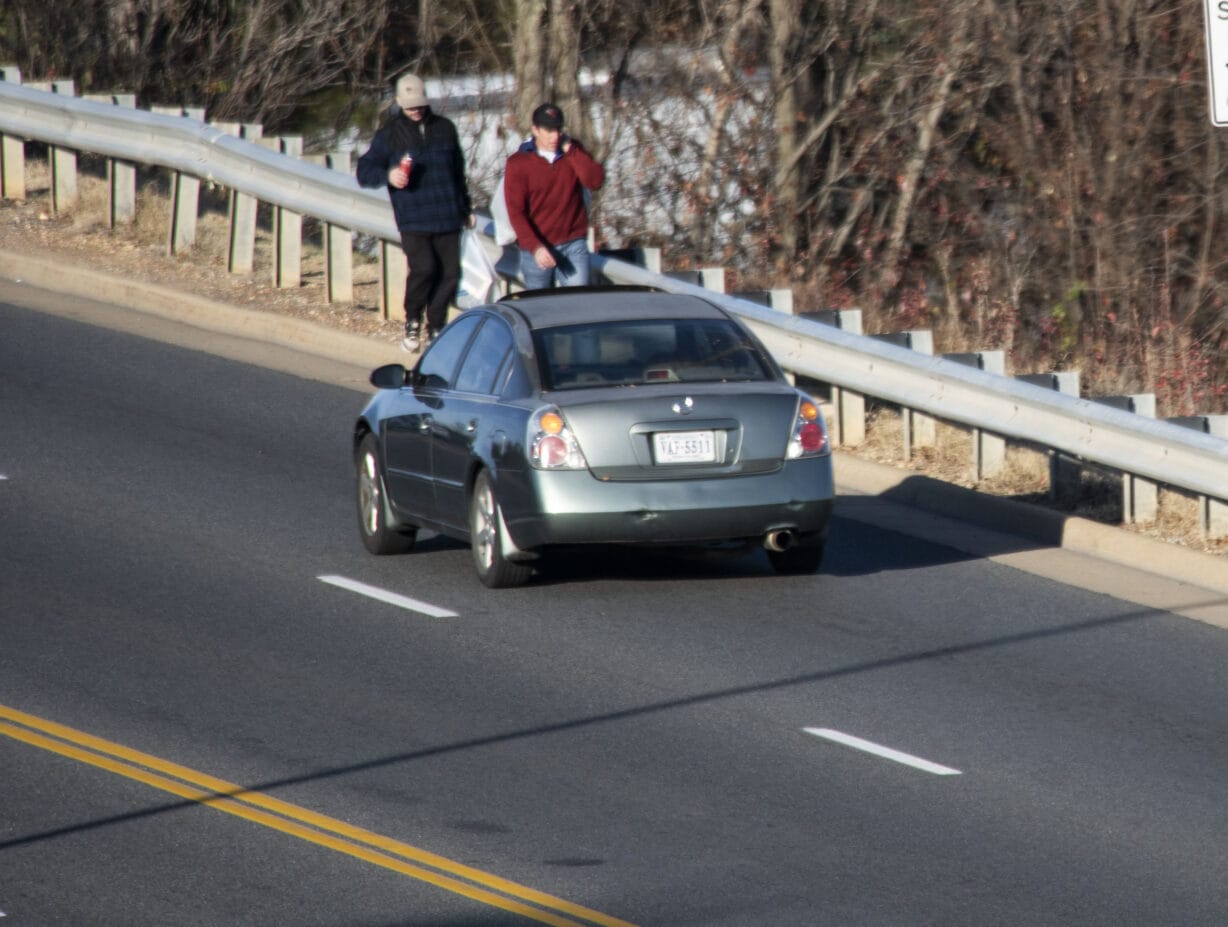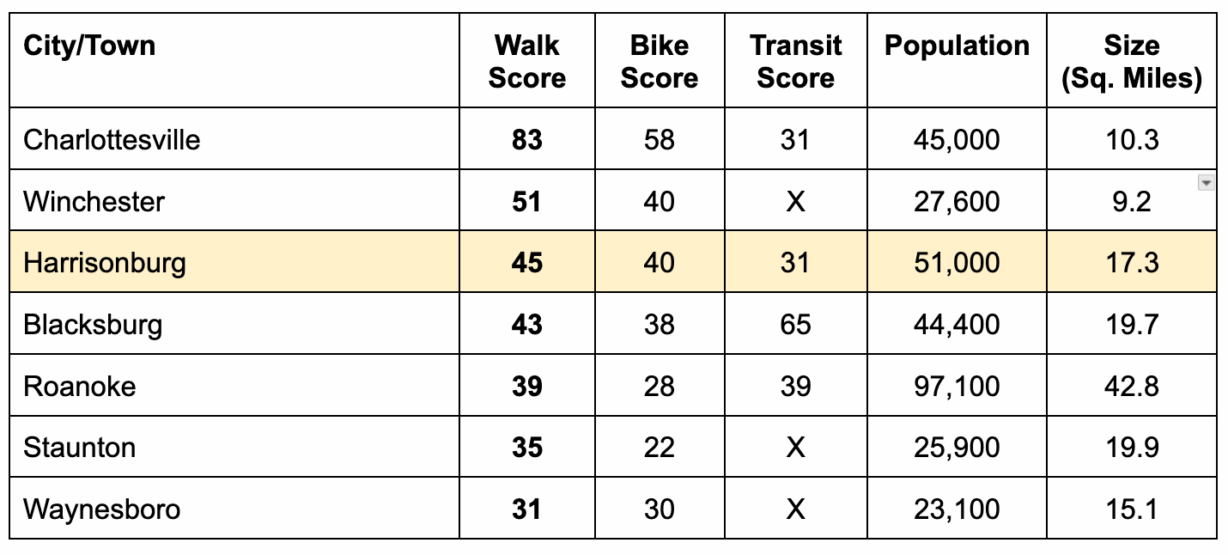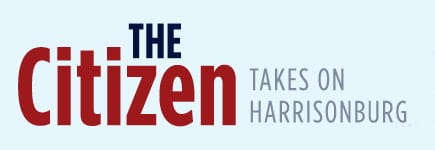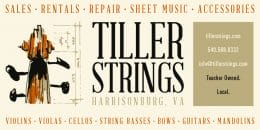A contributed perspectives piece by By Brent Finnegan
This is part 3 of a three-part series of Community Perspectives about transportation in Harrisonburg. Read part 1 and part 2.
Regular readers of The Citizen may be familiar with Sofia Samatar’s weekly column from 2024 about walking in Harrisonburg, The Friendly City. Her piece about non-places in Harrisonburg was one of my favorite:
“My walk to the mall takes me down Evelyn Byrd Avenue to University Boulevard, where I’m stranded without a sidewalk, a sure sign that the needs of pedestrians have been left out of this urban plan… These [non-places] are zones of transit rather than dwelling, of retail rather than social exchange, of convenience rather than experience…“
Many areas of Harrisonburg have been made into non-places. City planners from the 1950s through the early 2000s widened roads and revised zoning ordinances that deformed vast swathes of land into non-places built primarily to serve the needs of cars. These developments were not designed with walking in mind.
The term “walkable” means different things to different people. Sidewalks in a subdivision full of dead end cul-de-sacs might qualify as walkable to some, in the sense you can walk around a low-density residential neighborhood for exercise. But in the majority of these suburban areas, you can’t walk to anything useful. Work, school, and the grocery store are inaccessible from many residential subdivisions because these neighborhoods are hemmed in by stroads on all sides.
Large sections of the eastern and southern parts of the city are walkable in the same sense that you could swim across a river full of snapping turtles without getting bitten, but it’s not something you would do if you had a safer option. Driving a personal vehicle is a choice only to the extent that walking, biking, or taking the bus are technically possible. Our goal should be to make driving a choice, rather than a requirement.

There are some sidewalks in Harrisonburg’s non-places, but sidewalks don’t necessarily make a place walkable. Most of the streets in my TND grid neighborhood do not have continuous sidewalks, but there are lots of interconnected alleys. I can walk downtown in about 10 minutes and feel relatively safe (with the exception of crossing highways like 42 or 33). From the standpoint of people on foot or on a bike, paved alleys and shared use paths with modal filters are much better than sidewalks mere inches away from oncoming SUVs going 45 miles per hour.
According to Walk Score, Harrisonburg is officially a car-dependent city. We’re doing better than some of the comparable cities and towns in our region, but we are still failing those who can’t drive.

The moto-normative view that walking and biking are “just for exercise” causes harm. That harm can be seen in the number of people killed by cars because we won’t prioritize and build the right infrastructure that would truly make driving a choice. That harm takes the form of countless parking lots that create heat islands and exacerbates stormwater runoff across suburban America. Transportation is the leading source of greenhouse gas emissions in the US. To put it bluntly, car-centric norms are making this planet unlivable for future generations.
So why should we build a connected network of safe walking and biking infrastructure if so few people are currently walking and biking to daily destinations? Urban planner Brent Toderian put it like this, “You can’t justify a bridge by the number of people swimming across a river.” When I encourage friends to try out commuting by ebike, the number one objection I hear is that they wouldn’t feel safe biking alongside cars. Imagine if car infrastructure was as disconnected, unsafe, and unreliable as our walking and bike infrastructure. Disjointed and incomplete roads would be utterly unacceptable to motorists. Our lack of safe and connected routes to walk and bike to key destinations should be equally unacceptable to all of us.

The good news is that many of the decisions about what sort of transportation infrastructure gets built are made at City Hall, where local voices have a greater impact than in the halls of Congress. If federal infrastructure fails to materialize, the city can—and must—find more creative ways to achieve similar results, including adopting a low-cost quick build approach that prioritizes safety and active transportation.
In order to wean ourselves from car dependency, we need policy changes that may run counter to public sentiment about the role cars should play on our streets. Almost every city that has made a transformation away from car-first policies experienced significant public pushback in the early days of initiatives such as protected bike lanes or removing public subsidies for on-street parking. But the cities that stuck with their plan to make that transformation—Davis, Paris, Montreal, Mexico City, to name a few—have benefitted from improved air quality, local economic activity, and a better quality of life for local residents.
What if we allowed ourselves to reimagine our streets and networks of shared use paths in Harrisonburg? For example, we don’t allow food trucks, outdoor dining areas, or coffee shops along the Friendly City Trail, but we should. Imagine a shop or a farm stand with zero car parking. The only way to get there would be to walk or bike on the path. The tax revenue from these small businesses could help fund maintenance and expansion of the paved trail network. This is already being done elsewhere in the US.
It’s up to us to demand an end to policies that sacrifice the safety of children walking to school at the altar of driver convenience. Harrisonburg wasn’t always this car-centric. Our future doesn’t have to be, either. A better, more vibrant and sustainable city is within our reach.
Brent Finnegan has served on the Harrisonburg Planning Commission since 2016. He writes about local housing, transportation, and climate policy at The Friendly City Urbanist.











